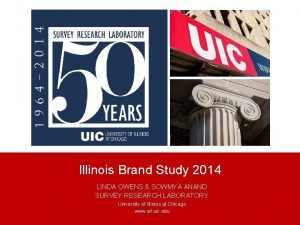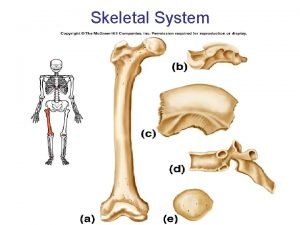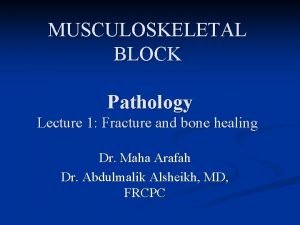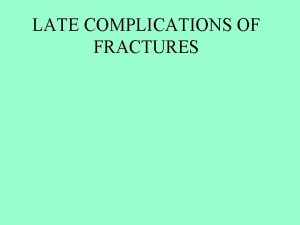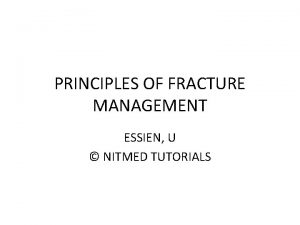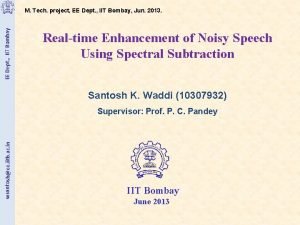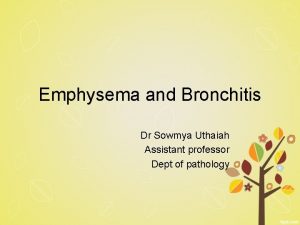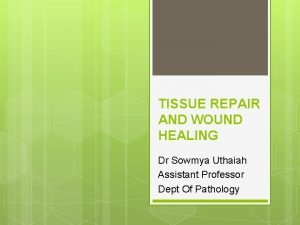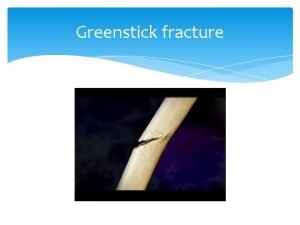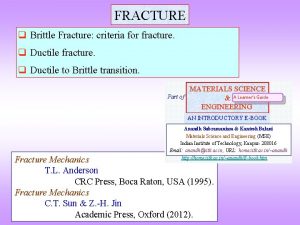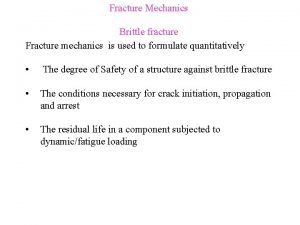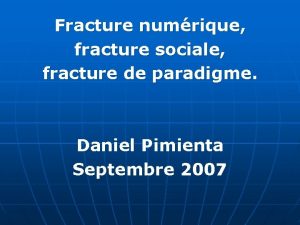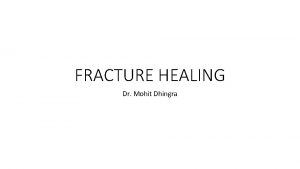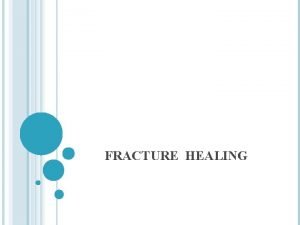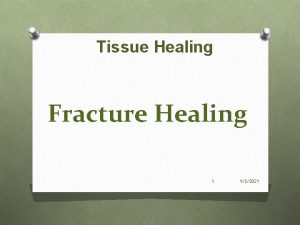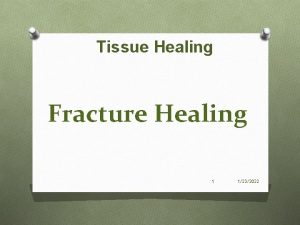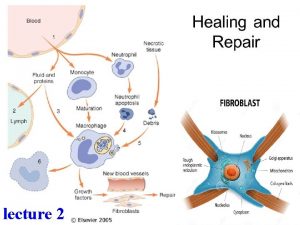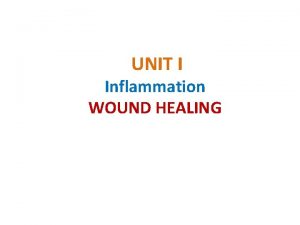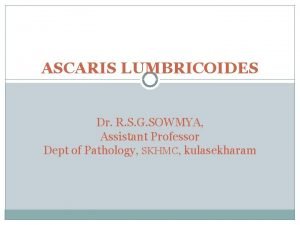FRACTURE HEALING Dr Sowmya Uthaiah Assistant professor Dept

















- Slides: 17

FRACTURE HEALING Dr. Sowmya Uthaiah Assistant professor Dept of pathology Yenepoya medical college

Fractures • Definition : A fracture is defined as loss of bone integrity due to mechanical injury and/or diminished bone strength

Types of fratures 1. Simple: the overlying skin is intact 2. Compound: the bone communicates with the skin surface 3. Comminuted: the bone is fragmented 4. Displaced: the ends of the bone at the fracture site are not aligned

Types of fractures……… 5. Stress: a slowly developing fracture that follows a period of increased physical activity in which the bone is subjected to repetitive loads 6. “Greenstick”: extending only partially through the bone, common in infants when bones are soft 7. Pathologic: involving bone weakened by an underlying disease process, such as a tumor



HEALING OF FRACTURES • Immediately after fracture----rupture of blood vessels------hematoma----- fills the fracture gap and surrounds the area of bone injury. • clotted blood provides ü a fibrin mesh ü sealing off the fracture site ü creates a framework for the influx of inflammatory cells ingrowth of fibroblasts and new capillaries


degranulated platelets and migrating inflammatory cells release PDGF, TGF-β, FGF, and other factors activate osteoprogenitor cells in the periosteum, medullary cavity, and surrounding soft tissues stimulate osteoclastic and osteoblastic activity


By the end of the first week -the major changes are ü organization of the hematoma ü matrix production in adjacent tissues ü remodeling of the fractured ends of the bone fusiform and predominantly uncalcified tissue called soft tissue callus or procallus ü Provides some anchorage between the ends of the fractured bones ü No structural rigidity for weight bearing

After approximately 2 weeks the soft tissue callus is transformed into a bony callus § activated osteoprogenitor cells deposit subperiosteal trabeculae of woven bone oriented perpendicular to the cortical axis and within the medullary cavity § activated mesenchymal cells in the soft tissues and bone surrounding the fracture line- differentiate into chondrocytes- make fibrocartilage and hyaline cartilage. Bony callus reaches its maximal girth at the end of the second or third week and helps to stabilize the fracture site


• The newly formed cartilage along the fracture line undergoes enchondral ossification contiguous network of bone with newly deposited bone trabeculae in the medulla and beneath the periosteum ü Fractured ends are bridged ü Mineralizes – stiffness and strength of the callus increases ü Controlled weight bearing is tolerated

Bone remodelling • early stages of callus formation, an excess of fibrous tissue, cartilage, and woven bone is produced • callus matures and is subjected to weight-bearing forces----portions that are not physically stressed are resorbed-----callus is reduced in size • the shape and outline of the fractured bone are reestablished as lamellar bone • restoration of the medullary cavity

Defects in healing • Displaced and comminuted fractures- deformity • Delayed union or nonunion- Inadequate immobilization permits movement of the callus---prevents its normal formation. • False joint or pseudoarthrosis-nonunion persists---malformed callus----cystic degeneration----luminal surface lined by synovial-like cells • infection of the fracture site esp open fractures • Malnutrition and skeletal dysplasia, osteoporosis and osteomalacia - hinder fracture healing

 Sowmya anand
Sowmya anand Diagram microscopic structure of bone
Diagram microscopic structure of bone Defintion of fracture
Defintion of fracture Non union types
Non union types 4rs of fracture management
4rs of fracture management Promotion from assistant to associate professor
Promotion from assistant to associate professor Cuhk salary scale 2020
Cuhk salary scale 2020 Ductile fracture occurs due to
Ductile fracture occurs due to Dept of finance and administration
Dept of finance and administration La dept of revenue
La dept of revenue Dept of education
Dept of education Gome dept
Gome dept Iit
Iit Worcester ma building dept
Worcester ma building dept Tabella nmr
Tabella nmr Hoe dept
Hoe dept Ohio dept of developmental disabilities
Ohio dept of developmental disabilities Geaux biz login
Geaux biz login
